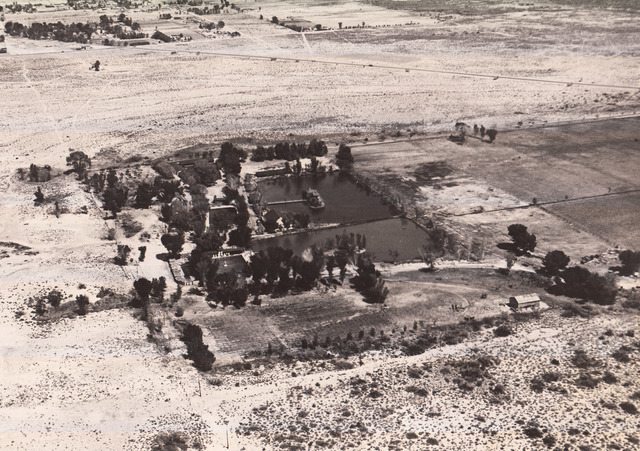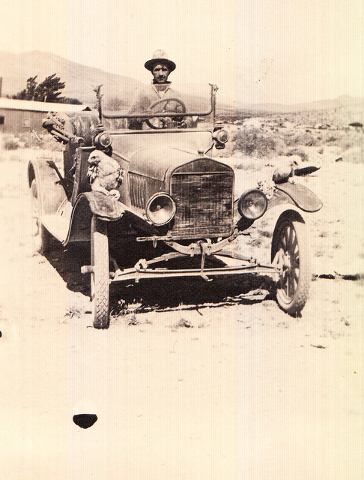Longtime east-siders share Las Vegas summertime memories
Summer is traditionally a time for travel, including trips to the beach, the lake, the mountains, to visit family and friends or to go back and visit old stamping grounds and reminisce. For Danny Gonzales, the old saying that you can’t go home again is true. The little town of Sloan, where he spent his early years, is gone.
“Sloan is a gravel pit now,” Gonzales said. “They’ve got a guard there, and they won’t let you in.”
Many longtime Las Vegans don’t remember the blazing summers being a problem when they were young because there weren’t a lot of options to beat the heat. Cooling down before air conditioning was a matter of fortitude and ingenuity.
“My parents had a place on A Street that had a cellar, but you couldn’t actually use it because the groundwater got in the cellar and the floor of it was always under water,” Rollie Gibbs said. “My father put a fan down there and hung wet burlap in the doorway, and that kept the house pretty cool, but it almost killed my brother. There was so much bacteria in the water that it made him sick all of the time.”
Standing water aside, the trick of using air blowing through wet cloth was a common one early residents of the valley used. Wet sheets hanging in windows were once a common sight in the summer here.
“When it got really hot, we’d soak our sheets before we went to bed,” said Gibbs’ wife of three years, Naomi Lytle. “It wasn’t very comfortable, but it helped.”
Gibbs and his siblings gave up on trying to sleep indoors when the weather got hot and slept in their yard, under six palm trees at a home his father built on A Street, near their old rental with the wet cellar. When Gibbs built his dream home on the west side of the valley, he moved those trees to his new yard.
The same technique of water-soaked fabric in windows was utilized in motor vehicles, too. Lytle recalls that her family would never try to make a long trek across the desert in the summer during the day.
“We would leave at midnight if we were going somewhere far, like to California,” she said. “We would hang a bag of water over the hood and use wet cloth in the windows. There was no other air conditioning in cars in those days.”
Gibbs was born in 1935 at the ranch that is now Sunset Park. He doesn’t remember a lot of summertime leisure because his family needed everyone to contribute to the family’s work. He recalls standing in a hay wagon stamping down alfalfa hay as a 4-year-old, despite being allergic to alfalfa.
“I’d be in there all day stamping it down, and my eyes would close up, and I could hardly breathe,” Gibbs said. “Then we’d go back the next day, and we’d do it again. My father would say, ‘If you don’t give milk or work, we’ve got no room for you in this family.’ He wasn’t mean; it was just what had to be done.”
Lytle remembers some leisure time, including trips to Twin Lakes (now Lorenzi Park) and Lake Mead to eat watermelon and cool off in the water. The family would usually head down around 5 p.m. when the day was about at its hottest and a cool swim was most welcome.
Most families grew some of their own food, including watermelons, cantaloupes and cucumbers. The gardens had to be watered at night, when the water would go into the ground and not evaporate into the air as much. Gibbs would volunteer to water the garden, snipping off cucumbers and such with a paring knife and sampling the harvest.
Gonzales was born in 1940 and moved back and forth between Las Vegas and the small, tightly knit community of Sloan just west of what is now exit 25 off Interstate 15. As a child, he never swam at Twin Lakes because of segregation that decreed where his family could live and recreate.
“Twin Lakes wouldn’t let me in because I was Mexican,” Gonzales said. Mexicans had to live on the west side, but my father was a railroad man, so we lived in the section house near the roundhouse sometimes, too.”
Gonzales said the section house and roundhouse were at the current location of Main Street Station. Although the segregation eased in the late ‘50s, growing up in Las Vegas was limiting for many minorities.
“It was different when I lived in Sloan,” Gonzales said. “There was still some segregation, but we were a small group, and the families all took care of each other. All of the kids played together and went to school together. We built a basketball court. All of us kids worked on it so we’d have something to do.”
Basketball also was one of the major off-time activities for Gibbs. Because his family had a few acres of land, most of the neighborhood kids played basketball at his house.
When Gibbs, Gonzales and Lytle got older, their activities expanded to horseback riding, cruising the burger joints, roller skating and hanging out at the Wildcats Lair, a social club on Stewart Avenue, and the movies, which were swamp-cooled. Although all of them remember what they did to stay cool, none of them recalls heat being a serious issue.
“I don’t feel like we suffered,” Gonzales said. “The heat didn’t bother us. We didn’t know anything different.”
To reach East Valley View reporter F. Andrew Taylor, email ataylor@viewnews.com or call 702-380-4532.





















